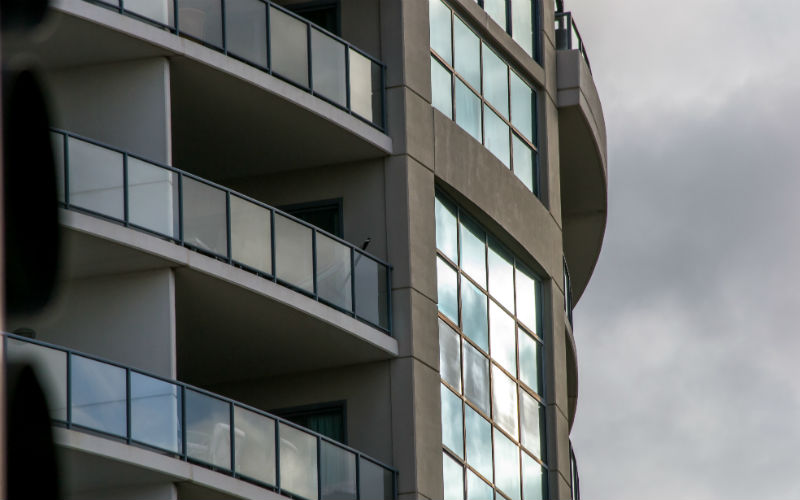Australian housing values grew 22.1% last year, but according to CoreLogic data the rate of growth is slowing across most capital cities.
CoreLogic's Property Pulse report shows while the rate of dwelling value appreciation is slowing, capital city and broad ‘rest of state’ markets are yet to peak.
CoreLogic’s Research Director Tim Lawless outlined how to identify a market has peaked, and the trends property watchers should be keeping an eye on.
"To categorise a market peak across a region, we would generally be looking for a consistent trend in negative monthly movements," Mr Lawless said.
"To date, the quarterly trend remains positive across the major regions, with the only exception being Darwin houses, which is the only capital city housing sector to record a negative quarterly change."
Mr Lawless also explained the difference in identifying peak growth and peak rate of growth.
"Although we can’t see any evidence that specific housing markets have peaked, it is clear that most markets have moved through a peak rate of growth," he said.
"What I mean by that is the point at which markets achieved their biggest monthly growth rate. We saw most of the capitals moved through a peak rate of growth around March last year."
Queensland still seeing growth
"The only broad regions avoiding a slowdown in the pace of growth in housing values are Brisbane, Adelaide and regional Queensland," Mr Lawless said.
"These markets are benefitting from a healthier level of affordability compared with the largest capitals along with a positive demographic trend and consistently low advertised stock levels.
"We could see our two biggest capital city markets Sydney and Melbourne hit their peak later this year although the timing is highly uncertain and depends on a broad range of influences."
Also read: Brisbane suburbs tipped for growth in 2022
Key signals a market is approaching its peak
"Normally, housing growth trends will gradually slow before moving into a correction phase, which is what we are seeing at the moment," Mr Lawless said.
"However, this isn’t always the case. During periods of shock such as the GFC or early in the pandemic, housing trends turned quite sharply into negative territory."
Other signs to watch for include:
- Rising advertised stock levels.
- Affordability constraints.
- Weakening auction clearance rates, and
- Softening vendor metrics such as longer days-on-market and larger levels of discounting.
What to expect following a market peak
“Once a market peaks, the typical trend is that values will experience a period of decline,” Mr Lawless said.
“The duration and severity of the decline is dependent on a broad range of both macro and micro factors.”
Since the late 1980s, Australia has experienced national downturns that have ranged in severity from a -1.0% peak to trough decline in 2015-16, a temporary correction following the first round of credit tightening via the prudential regulator's 10% 'speed' limit on investment lending, to the most recent -8.4% decline experienced during the 2017-19 downturn.
Source: CoreLogic
Advertisement
Buying a home or looking to refinance? The table below features home loans with some of the lowest interest rates on the market for owner occupiers.
| Lender | Home Loan | Interest Rate | Comparison Rate* | Monthly Repayment | Repayment type | Rate Type | Offset | Redraw | Ongoing Fees | Upfront Fees | Max LVR | Lump Sum Repayment | Additional Repayments | Split Loan Option | Tags | Row Tags | Features | Link | Compare | Promoted Product | Disclosure |
|---|---|---|---|---|---|---|---|---|---|---|---|---|---|---|---|---|---|---|---|---|---|
5.79% p.a. | 5.83% p.a. | $2,931 | Principal & Interest | Variable | $0 | $530 | 90% |
| Promoted | Disclosure | |||||||||||
5.74% p.a. | 5.65% p.a. | $2,915 | Principal & Interest | Variable | $0 | $0 | 80% |
| Promoted | Disclosure | |||||||||||
5.84% p.a. | 6.08% p.a. | $2,947 | Principal & Interest | Variable | $250 | $250 | 60% |
| Promoted | Disclosure |
Image by Samuel Scrimshaw via Unsplash

Ready, Set, Buy!
Learn everything you need to know about buying property – from choosing the right property and home loan, to the purchasing process, tips to save money and more!
With bonus Q&A sheet and Crossword!






 Denise Raward
Denise Raward


 Harry O'Sullivan
Harry O'Sullivan
 Emma Duffy
Emma Duffy

